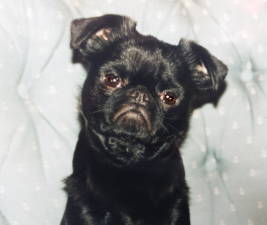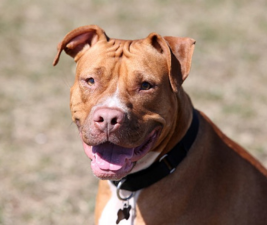If X happens, Y follows. As a concept, it’s easy for people to understand. Consequences are the foreseeable outcomes of actions. It’s how we plan and it guides our actions. But cause and effect are meaningless to dogs.
The way dogs live in the moment is, in many ways, wonderful. There are lots of lessons to be learned – how to be spontaneous, to meet new things/people/experiences with joy, to never hold a grudge, to always let the people you love know it.
There’s also the flip side. Dogs completely lack understanding of cause and effect. Case in point: every time Booker (11-year-old Boston Terrier) eats grass, he throws up. It’s not always immediate, so he’s never going to put the two things together. He will never understand why we tell him “don’t eat grass.” And despite his actual Obedience titles, we still have to tell him every time we take him out.
Even when the effect is immediate, the learning process has a limited life span. And it can be a painful one. We had a Boston named Daemon who ate a wasp one Spring. He was intrigued by its buzzing, followed it around, and ate it. His mouth was stung and it hurt. He had a miserable few hours, but he was fine. He didn’t eat another wasp that year. The following Spring we went through it again. Every year was the same darn thing. He had to eat that first Spring wasp to remember not to do that – this year.
Don’t worry, be happy
Dogs don’t worry about what may happen in the future. Even if a dog is terrified of thunder, they don’t think about thunder unless it’s happening now. They don’t spend their days concerned about the next storm. That’s an admirable trait. No one ever changed the future just by worrying about it. It’s one thing to take some action to prevent future problems. But if something’s bound to happen, like thunder, and there’s nothing you can do about it, you may as well not even think about it.
If you ever find yourself threatening your dog with consequences (If you stick your nose in the trash, you’re in big trouble) you’re wasting your breath. If you leave temptation out in the open, even if your dog has been told a million times, they will succumb to the lure.
Invariably there’s someone in our puppy training classes who complains about a puppy stealing and chewing on their shoes. Those people are usually a bit surprised by our complete lack of sympathy. If your dog got your shoes, it’s your fault. You should have put the shoes away. If you want to train the dog not to steal shoes, you have to be there when the dog is making the attempt. And make it worth their while to be “good.”
Be their fortune teller
Your dog can’t see the future, plan for it, or even realize that it exists. In many ways, that’s a blessing. They don’t worry about getting old. They don’t even have a concept of dying. Your dog is thrilled when you walk in the door, even if all you did was take out the trash. Because the moment we’re living is the only one that exists for your dog.
Dogs do form emotional associations, but they’ll never tell us why. If a dog adopted from a shelter or rescue shies away from a person holding an umbrella, it’s natural for people to think someone may have harmed the dog with an umbrella. Humans want to know the cause of that particular effect. It’s how we think. But it could just be that the dog was startled when the umbrella opened. And when the dog’s person went into “poor baby” mode, the dog figured out that acting fearful got them attention. Dogs are extremely adept at reading us. And they’re absolute wizards at getting what they want from us.
Detangle the thread
Once people embrace the difference between how dogs think and how people do, they’re much better at arranging life so their dog always has the opportunity to be “good.” Realizing that dogs don’t have an iota of forethought lets you look at their actions a new way. Rather than “What did you think was going to happen?” ask “Why was that an attractive thing to do?” Now you know that cause and effect are meaningless to dogs.
If there’s a tasty morsel in plain sight on the counter, your dog isn’t going to think about how much trouble they’ll get in for being up on the counter. The thought process doesn’t go any further than “Want!” unless you’ve trained your dog no to counter-surf. We’re the ones who understand cause and effect. So we have to be the humans in the relationship.
Enjoyed this post? Click here to sign up for the weekly newsletter and never miss another!












